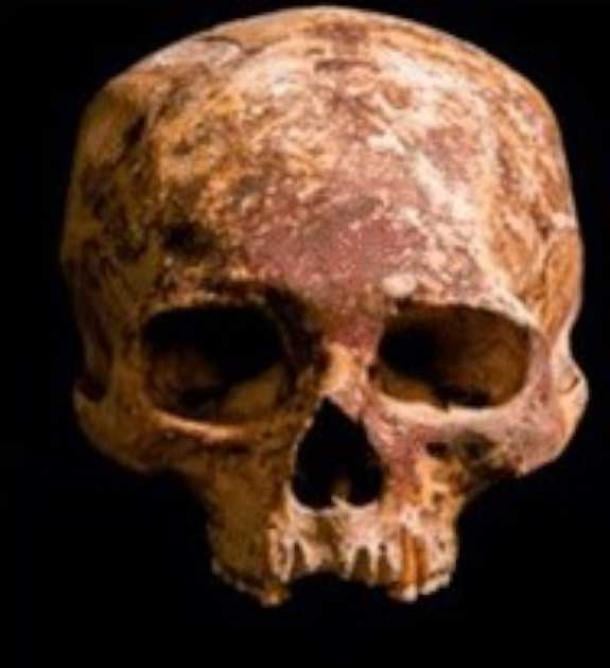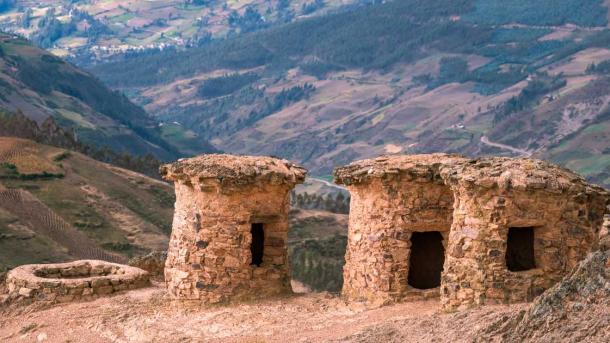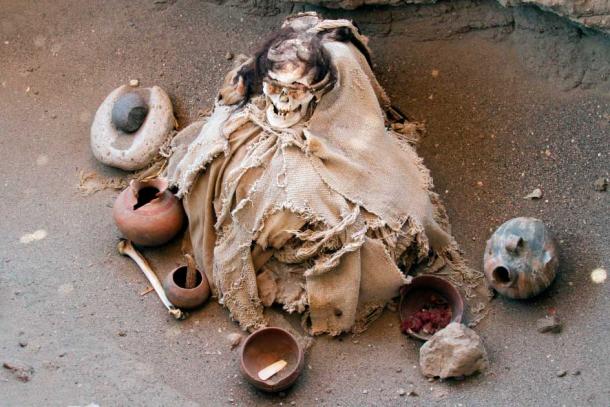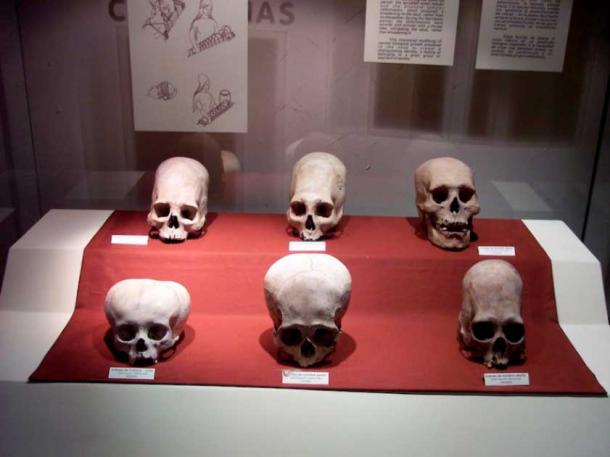It is well known that ancient cultures in what is today Peru deformed their babies’ skulls to form elongated shapes. A new study reveals that, a millennium ago, people ‘finger painted’ the skulls of their dead ancestors with red pigments.

The pre-Columbian Chincha culture existed during the Late Intermediate Period (900 CE–1450 CE) in what is today the southwest of Peru, near the Pacific Ocean. Around 1480 AD, the Chincha culture became part of the Inca Empire, and their lineages disappeared a few decades after the Spanish conquest of Peru began in 1532 AD.
Now, a new study looking at hundreds of fragmented red painted Chincha skulls and artifacts shows not only that this act bound the living with the dead, but it also “spiritually protected” looted graves.

Painting skulls with various red pigments was a common practice across several ancient cultures. A recent study revealed class differences in the substances used. Source: J Watkins / CC BY NC ND 4.0
Forming Close Relationships with the Dead
The new study was published in the March 2023 issue of the Journal of Anthropological Archaeology. First author of the study Jacob Bongers, an anthropological archaeologist at Boston University, told Live Science that the new research required analyzing hundreds of human remains and artifacts found in the Chincha Valley of southern Peru.
The skulls were found in more than 100 chullpas, which are large mortuary structures in which whole families were buried, similarly to mausoleums. All of the bone and artifact samples dated to between 1000 and 1825 AD. The scientists discovered that Chincha people “decorated their ancestors’ remains with red pigment,” and it is thought that this process was “critical for forming close relationships between the living and the dead,” Bongers said.

Pre-Inca chullpas or burial towers, dot the Peruvian countryside. (Alfredo / Adobe Stock)
Skulls Were Painted Red at Pivotal Moments of Their Transformation
The researchers said in their study that the people painted thick vertical and horizontal lines on skulls, which is consistent with “someone using their fingers” as application tools. Different mixes of red paints were used for different skulls, and it was found that only certain people’s craniums were painted after death.
“Death was not the end,” the researchers wrote, and they concluded that people probably finger painted skulls during a ritual. Speculating about that ritual, it was probably intended to give “the dead a new kind of social life.” Furthermore, the red paint ritual was “a pivotal moment of transformation into another kind of existence, and a critical transition from one state to another, providing the basis for further life”.

The Chincha culture buried their dead in chullpas, and involved them in ceremonies in which some skulls were painted with red pigment by fingertip (Gerardo Daniel / Adobe Stock)
Even Elongated Skulls Were Painted Red
To arrive at their conclusions, the researchers sampled red pigment from 38 different artifacts and bones, including 25 human skulls. While the tested skulls were predominantly male, the bones of women, children, people recovering from traumatic injuries, and folk with elongated skulls were also painted.
The team applied three scientific techniques to successfully identify the chemical composition of the red paints. The pigments on 24 of the samples were iron-based ochres like hematite. Thirteen paint mixes were made from mercury-based cinnabar, and one had signatures of both, according to the new study. The chemical analysis also showed that the cinnabar was imported from hundreds of miles away, while the hematite probably came from local sources. These differences, wrote the researchers, “may reflect elite and non-elite uses of pigments”.

Intentional skull deformation or head shaping was common in several pre-Inca cultures. Some of these were also ‘finger painted’ with various red pigments. (Robrrb / CC BY SA 3.0)
Painting Bones Red to Protect Graves from Post-Conquest Chaos
Some of the painted skulls were moved and then placed over other graves, which leads the researchers to presume this was a way of protecting the dead. They hypothesize that the painted skulls found in tomb-raided chullpas had been painted for protection, after having been “desecrated” by tomb raiders in the smoke of the European invasion.
Summarizing their new finds, the researchers said it has long been known that Chincha peoples “used textiles, leaves, and their own hands to apply red pigment to human remains.” And with this new paper revealing so much about the ancient finger painting process, it “brings to light this living-dead relationship as well as social differences for others to see”.